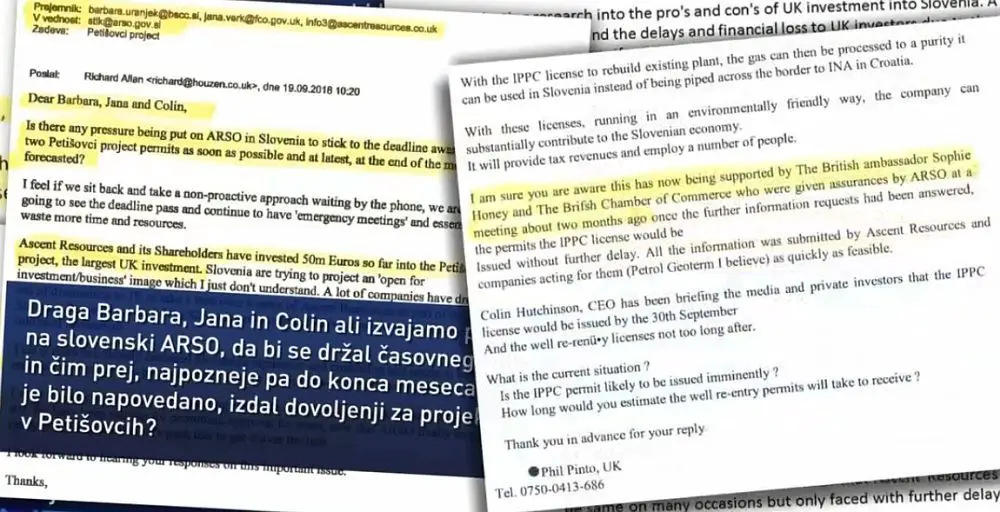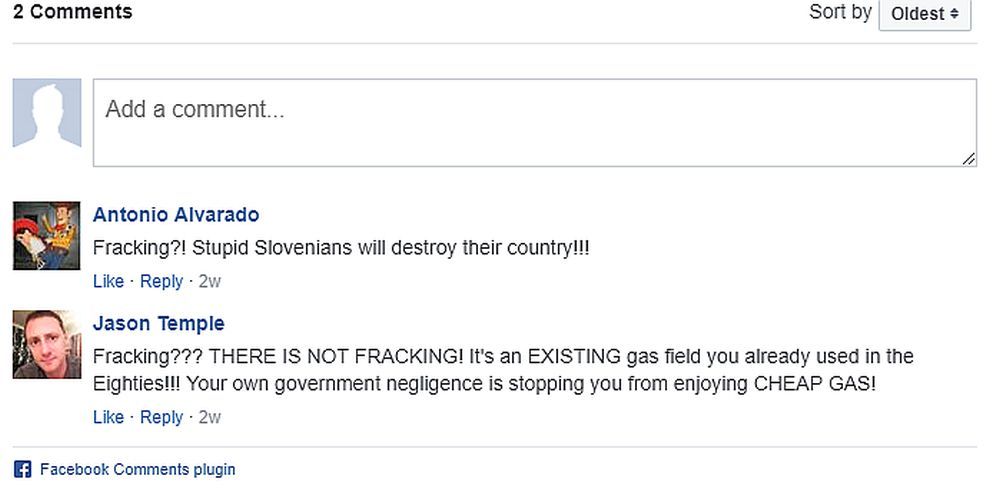Ljubljana related
January 7, 2019
The administrative court suspended the implementation of the decree on the removal of brown bears from nature, which the government endorsed at the end of last November. According to the decree, 200 bears were planned to be taken out of Slovenian forests. Among these, 175 were supposed to be shot, while the remaining 25 were expected to die due to accidents or other causes.
Related: Brown bear photography in Slovenia
In December, the environmental protection organisation Alpe Adria Green (AAG) brought an action against the decree and a request for an interim injunction. The group is convinced that the decree violates the Nature Conservation Act, the Habitats Directive and the Constitution. The AAG noted that the government endorsed the decree despite numerous complaints on its drafting, and that the Ministry of Environment and Spatial Planning did not answer the requests for an explanation as to why such a number of bears had to be removed from nature. At the same time, the AAG expressed its expectation that the decree will also be annulled.
This is not the first time that the court has intervened in the destiny of large wildlife in Slovenia. The same decree that involves bears previously included eleven wolves to be taken out of nature, but after a public hearing the wolves were removed from the proposed cull. The Environmental Ministry took this decision after two judgments of the administrative court, which ruled that the reason for shooting the wolves, which was given as preventing the animals from killing livestock, and thus maintaining public acceptance of wolves, was not sufficiently substantiated.
All out stories about bears in Slovenia are here.
STA, 1 January 2019 - Buyers in stores across Slovenia will no longer be able to get plastic bags free of charge as of today. However, free lightweight plastic bags will still be allowed at the fresh produce isle. The measure is a part of EU-wide efforts to halve the use of lightweight plastic bags to 90 per person annually by the end of 2019.
Buyers will still be able to buy plastic bags at the register, however the retailers are not allowed to set the price lower than wholesale.
The measure aims to reduce the use of lightweight plastic bags per person from 200 a year to 90 by the end of this year and to 40 by the end of 2025.
Many Slovenian retailers no longer supply plastic bags free of charge. However, buyers may still get a lightweight plastic bag from the cashier, without having to ask, when buying frozen stuffs or cleaning supplies.
However, new Environment Minister Jure Leben announced after being appointed in September that Slovenia would soon impose a general plastic bag ban.
He has recently sent out invitations to retail chains for a meeting to discuss his plan under which plastic bags would not be available at the cash registers at all.
Related: Meet the People - Neja Maruša Medved, Vegan and Zero Waste Blogger
December 10, 2018
It has been reported last week that a Slovenian hunter killed a bear called Elisio, a collar-wearing subject of research at the University of Udine, Italy. The animal was shot in the area of Senožeče, Slovenia, and has in the past five years, while wearing the tracking collar, survived a collision with a train, completed several ascents over 2100 metres, swam across Cavazzo lake several times, and figured out how to safely cross a Slovenian highway.
The event stirred a lot of outrage on the Italian side of Elisio’s territory, while it continues to remain a minor story in Slovenia. One of the reasons might be in a conservation status of the Italian subspecies of the brown bear, that is the Apennine Brown Bear, which is marked at “critically endangered”. In contrast, the Slovenian government struggles to keep the number of ordinary European brown bears in check, with the conservation status marked as “least concern”, and bear salami being an ordinary offer at the Christmas stalls found in the central marketplace of Ljubljana. The important point here is that Elisio was an ordinary brown bear, not an endangered Apennine subspecies.
There are currently about 1,000 bears in Slovenia, and the Slovenian Ministry of Environment and Spatial Planning ordered this number to be reduced by 200, 175 of which will be taken out by hunters before April 30, 2019 (Delo). This is also the reason why Italian researchers reported weekly on Elisio's whereabouts, hoping this would prevent him from getting shot. It did not.
Andrej Sila, from Sežana branch of the Slovenia Forest Service, expressed regret at the incident: “We are all very sorry that the hunter shot Elisio. We have permission to shoot five bears in our area due to population control. It happened as a consequence of a series of unfortunate events. The hunter shot the bear in the evening, when his collar wasn't visible.”. He also explained that weekly reports on the whereabouts of the bear cannot prevent these types of accidents, since bears tend to travel tens of kilometres a day.
This is not the first time Slovenian hunters killed a bear with an Italian research collar. In 2011 a Slovenian hunter shot a bear near Vrhnika, who then turned out to be an Italian media sensation called Dino. In the preceding year Dino managed to kill 14 donkeys in Northern Italy before the Slovenian hunter did not see his collar and shot him in a forest (source). Dino’s survival prospects, however, were dim even without the shooting, as his collar had grown deep into his flesh, causing an infection and starting to slowly suffocate the animal. When the hunter first saw him, Dino was hitting his head against a tree, presumably due to the pain. The collar, unlike the ones in use today, was not equipped with a “drop-off” system, which activates when the collar becomes too small and begins making it difficult for the animal to breath.
STA, 8 December 2018 - As 45 years pass this year since the lynx was reintroduced to Slovenia, preparations are under way for the first new animal to be brought to Slovenia early next year as part of the Life Lynx international project.
The wildcat will come to Slovenia from Romania or Slovakia, depending on which country manages to catch it first, the Life Lynx project group has told the STA.
The Eurasian lynx was reintroduced to Slovenia in 1973 upon the Slovenian hunters' initiative.
There are perhaps between 15 and 20 lynx in Slovenia
The current population, estimated at 15 to 20 animals, are descendants of six animals brought to Slovenia then from Slovakia.
The Life Lynx project group also launched this year a systematic monitoring of lynxes with automatic cameras, but results have not yet been fully analysed.
The largest wildcat in Europe is at the verge of extinction; it is believed that it could die out in a few years' time unless action is taken.
The Life Lynx project aims to save the lynx population in the Dinaric Alps and in south-eastern Alps.
It brings together eleven organisations from five countries, with Slovenia's partner being the national Forestry Service.
The first lynx will be released in the area of Loški Potok in the region of Kočevska in the south on the border with Croatia.
Before it is released, it will spend some time in a quarantine in the area, also to get used to the new environment.
"We expect an animal to spend some three weeks in quarantine," the group said.
Ten more animals due to arrive in the country
As part of the project, ten animals are expected to be brought to Slovenia, five to the regions of Kočevska and Notranjska and five to Gorenjska, north-west.
"The lynx released in Gorenjska will help connect Dinaric lynx populations with those in the Alps, which is vital for their long-term existence in Slovenia and in the Alps."
As part of the reintroduction, the Slovenian Hunters' Association will help train some 20 police officers who will investigate illegal lynx hunting, in what the project group said was unique in Europe.
You can learn more about the Life Lynx project in Slovenia here
December 8, 2018
The drama over Petišovci gas extraction permits and the British company Ascent Resources appears to be one of those classic tales of a conflict between one country’s sovereign right over its environmental protection standards and the profit-making interests of the international capital, backed by neoclassical economics’ arguments on the beneficial effects of any foreign direct investment on the local economies.
However, this textbook ideological conflict was given another spin by an army of internet trolls, who sent a series of harassing messages to Slovenian government officials, including the Minister of Environment, which resulted in strengthening the Minister’s police protection and an internal investigation into the procedures surrounding the issue of environmental permits by the Ministry’s environmental agency (ARSO). With the British Ambassador also involved in lobbying for the British firm, three Slovenian political parties have also demanded that her involvement be investigated.
The issue centres on fracking in Slovenia
Gas has been extracted at Petišovci, North East Slovenia, since the 1960s, first by state-owned enterprises, then in 2002 the concession was granted to Geoenergo d.o.o. whose equal shareholders are two state-owned firms, Petrol and Nafta Lendava. Initially, gas was being extracted under its own pressure, until, according to Gorazd Marinček, eco activist, the problematic method of hydraulic fracturing, or “fracking”, was introduced in two wells around the year 2011.
At least since 2011, Geoenergo has been in a 25/75 Joint Venture Agreement with the Maltese firm Ascent Slovenia Limited, a subsidiary of a London based company Ascent Resources (established in 2004). Another subsidiary of Ascent Resources, Ascent Resources d.o.o. is also located at the same address in Lendava. According to a recent edition of RTV Slovenia’s Tarča (Target) the only income of the Ascent Resources comes from unrefined gas extraction from the two remaining operating wells in Petišovci. The chain of companies, according to Tarča, reported a loss of over EUR 2.5 million last year, while awaiting the ARSO environmental permit that would allow it to deepen the wells and boost production, as well as to “build a processing plant to treat the gas for injection into the Slovenian national gas network achieving the highest possible price” (source).
The joint venture applied for and also received the environmental permits in 2014. However, environmental NGO’s appealed to the Ministry of Environment, although their appeal was rejected, so they moved further to the administrative court, which confirmed procedural inconsistencies in the permit issuing process and returned the matter back to the starting point at ARSO. The process was repeated again with an appealed to the Ministry, then the administrative court, which rejected the appeal, so that the process in this second round has not yet been cancelled.
Pressure from British investors, and irregularities in the permit process
Meanwhile, the British side of the venture has been growing increasingly impatient. On February 15 2018, the CEO of the Ascent Resources, Colin Hutchinson, visited then Slovenian Prime Minister Miro Cerar, and on July 4th representatives of the company met with the Economic Minster. However, in August, when the old government was leaving and new one hadn’t taken over yet, a meeting was arranged at the initiative of the British-Slovenian Chamber of Commerce. The invitations to all parties were dispatched by the Ministry's directorate, and, most problematically, the meeting was eventually attended by Nataša Petrovič, the director of the Environment and Nature Protection Office in charge of ARSO’s environmental permits.
Apparently, at this meeting, which, according to the Ministry was only of informative nature, promises were made to the Ascent Resources (AR) that the environmental permit would be ready before the end of September, which is what AR then announced to investors. At the end of October, however, the new Environmental Minister, Jure Leben, introduced an internal investigation into the possibility of any external pressures being exercised over the ministry’s officials in the process of issuing environmental permits. The investigation eventually confirmed irregularities in these procedures, which included the August meeting of Nataša Petrovič with the AR representatives. As Tarča reported: “the Office director has participated in the meeting and provided information on specific procedures, thereby raising doubts as to the autonomy and independence of the Office, and allowing public interpretations, harmful for the reputation of the Office and its officials.” Furthermore, no minutes of this August meeting exist nor has the lobbying contact been reported to the Corruption Prevention Commission.
Threats of legal action accompanied by hate mail
Also at the end of October, AR announced it would explore taking Slovenia to the EU Court after the company failed in its attempts to get a response from the Environment Agency on Jure Leben’s internal inquiry into the awarding of environmental permits.
Furthermore, the number of offensive messages sent to ARSO, presumably by enraged British shareholders, multiplied and also hit Minister Leben’s mailbox and Twitter account. The minister is currently under enhanced police protection while a criminal investigation into the source of messages is taking place.



Insulting comments by what appear to be fake Facebook accounts even managed to find their way to our own website, trying to stir the fight under an article on the matter. Luckily, nobody took the bait.

Let’s not forget that in America in 2016 “Russian actors organized both anti-Islam and pro-Islam protests in the same location at the same time on May 21, 2016, using separate Facebook pages operated from a so-called troll farm in St. Petersburg”. The whole mission costed about US $200. (Source)
The British Embassy connection
To complicate the situation a bit further, on November 13 the British Ambassador to Slovenia, Sophie Honey, paid a visit to the Environmental Minister Jure Leben, asking questions about the possible deadlines for environmental permits and also about the results of the internal investigation. HMA Honey appears to have been advocating for the Petišovci project at least since January 2017, when she visited the site of the project and met with the Slovenian and British partners.
At about the same time three extra-parliamentary parties, Solidarity, Pirates and the United Left, asked for an ethical assessment of the British Ambassador’s conduct, who they believed lobbied the previous government to accelerate the license award process.
As reported by Delo, the British Embassy in Ljubljana denied the allegations, and explained that HMA Sophie Honey did not in any way want to influence the Slovenian decision, but only highlighted the need for predictable deadlines in procedures for foreign investors, including for AR, with this being an important part of achieving the goals of increasing bilateral trade and investment between the states.
Furthermore the tree political parties stated that they saw AR’s attempt to take Slovenia to the EU Court, to overrule the Slovenian system, as a kind of threat, even if no other pressures were being applied.
Let’s not forget that the confidence of Slovenia’s environmental administration in dealing with pressures from foreign capital rose significantly just last month, when the French multinational Lafarge sued Slovenia over being denied a renewed environmental permit after years of burning banned petroleum coke in its cement plant in Trbovlje. Lafarge finally lost its case at the Slovenian Administrative court, and is currently shutting down its operations in Slovenia.
STA, 20 November 2018 - Slovenia will get significantly hotter by the end of the century as greenhouse gas emissions drive climate change, and even the most optimistic scenarios show that the frequency and severity of heat waves will increase. Precipitation patterns will be upended as well, in particular in winter, the latest climate projections show.
The projections, released by the Slovenian Environment Agency on Tuesday, consider three scenarios of climate change compared to the reference years 1981-2010 - and under all of them the changes will be profound.
Average temperatures set to rise
Average temperatures, having already increased by 2.2 degrees Celsius since pre-industrial times by 2011, are projected to rise by 1.3 degrees by the end of the century according to the most optimistic scenario and as much as 6 degrees according to the most pessimistic scenario.
The number of hot days will increase by 6-27 days depending on scenario, but even under the most optimistic scenario heat waves will be much more common and longer.
There will be at least one heat wave each year as bad or worse than the record-setting heat wave of 2003. "By the end of the century, 2003 could be considered quite fresh," Environment Agency researcher Gregor Vertačnik said.
The flip side of the warmer climate will be a significantly longer growing season, which could begin a month earlier and end a month later, without an increase in the probability of spring frost.
More rain is expected under both optimistic and pessimistic projections
In the past fifty years Slovenia has been getting drier, with precipitation dropping by about a tenth and the snow cover by more than half.
But by the end of the century, the situation is likely to be completely different, especially in eastern Slovenia.
In the moderately optimistic and pessimistic scenarios precipitation is expected to increase by 20% by the end of the century, but the overall increase masks even more profound seasonal changes.
In the pessimistic scenario, winter precipitation is projected to increase by 40% by the middle of the century and up to 60% by the end of the century.
In other seasons the change will not be so profound, though projections show a significant increase in extreme weather events such as flooding in general.
Droughts not a problem
The good news, according to the agency, is that Slovenia will not have a shortage of water, as the average annual replenishing of aquifers will increase by about a fifth.
But this also means waterways are more likely to spill over.
The Environment Agency said the projections show climate change will impact every facet of life and required adaptation.
"The projections are primarily a groundwork for adaptation to climate change. But they can also be used in strategic projects with a long time span which must be resilient to climate change. Everyone planning such projects needs our forecasts," according to the agency's chief climatologist Mojca Dolinar.
Barbara Simonič of the Ministry of the Environment and Spatial Planning said resilience to climate change needed to improve. She said the national-level projections must now be followed-up by assessments for individual sectors.
While the analysis considers three scenarios, the agency also warns that there is a high degree of uncertainty, with the gravity of change depending on how much humanity manages to limit greenhouse gas emissions and how reliable the forecasting models are.
Our other stories on climate change sand Slovenia are here
STA, 12 November 2018 - Joško Knez, the director general of the Environment Agency (ARSO), stepped down on Monday, over an internal review of procedures for granting environmental permits for a controversial Ascent Resources gas extraction project in the far north-east of the country.
According to a report by the news portal Siol, Knez has resigned because irregularities were uncovered in the review ordered by the new Environment Minister Jure Leben last month.
Leben ordered the oversight of procedures for extracting gas in the Petišovci area by the UK's Ascent Resources and its Slovenian partner Geoenergo. The latter is owned by energy companies Petrol and Nafta Lendava, which are in majority ownership of the state.
According to a recent report by investment research firm Morningstar, Ascent Resources had received "repeated" private assurances from senior government officials, especially at the Environment Agency, that it would be getting the permit soon.
Apparently the review struck a nerve and the UK-based company launched an offensive against Slovenia, and Leben in particular.
At the end of October, Ascent Resources said it was mulling taking Slovenia to "EU courts" over the delay, while the minister has had to face an onslaught from shareholders and the management of the UK company.
Ascent Resources director and shareholder Colin Hutchinson tweeted that the company "invested EUR 50m in the project to date and will not walk away. The permitting system in the country is in need of urgent reform and foreign investors should be very wary of investing until this happens".
However, the Environment Ministry said today that "today's report corroborates that the minister's suspicions have been warranted", as the principles of independence and autonomy of ARSO were violated in the two procedures.
Moreover, the report says that "persons from abroad apparently do not find unacceptable and contentious putting pressure on Slovenian officials and are willing to repeat them".
The findings of the review will be forwarded to the relevant authorities, including "all the efforts to put pressure on the ministry during the review".
Just today, three non-parliamentary parties and several environmental NGOs urged Foreign Minister Miro Cerar to summon UK Ambassador Sophie Honey over lobbying for the UK company.
The Pirates, Solidarity, and the United Left and Workers' Labour Party (ZL-DSD) alliance, accuse Honey of lobbying and putting pressure on Slovenian authorities to secure the environmental permit for fracking in the Petišovci area.
Ascent Resources claims it would use hydraulic stimulation and not fracking to extract gas in Petišovci. This was corroborated by Geoenergo, which said that the method used in Slovenia would differ from fracking as used in the US significantly.
The procedure, "cannot and must not be equalised with the hydraulic treatment or fracturing of shale ... There are significant differences between the procedures in Slovenia and those in the US ... that basically stem from the difference in the geological profile of the rock".
But the environmental alliance is unconvinced. "We're witnessing a reality show where multinationals are treating us as natives from the most underdeveloped countries and heaping alternative truths on us in line with the worst case of fake news," environmental activist Gorazd Marinček told the press today.
STA, 30 October - Slovenians use as many as 16 million candles a year to decorate graves, which ranks the country third in the world per capita. However, the tradition of honouring the dead in this way, which is especially prominent around All Saints' Day, could cause an ecological disaster.
With a street festival on Ljubljana’s Slovenska cesta and free buses on Sunday, plus events all over the country.
STA, 13 September 2018 - The latest official statistics show Slovenia's CO2 emissions rose by 3.8% in 2016 compared to the year before, while nitrogen oxide emissions increased by 4.5%. A total of 15.2m tonnes of CO2 was generated in 2016, the Statistics Office said on Thursday.





